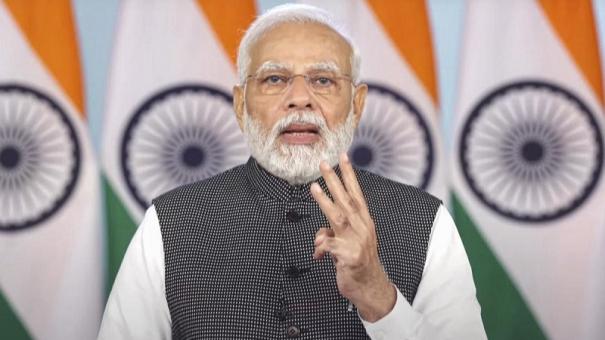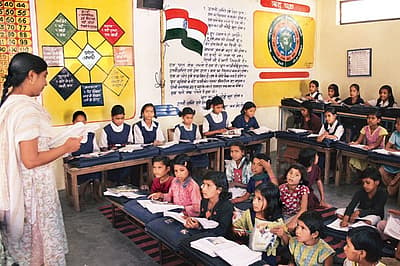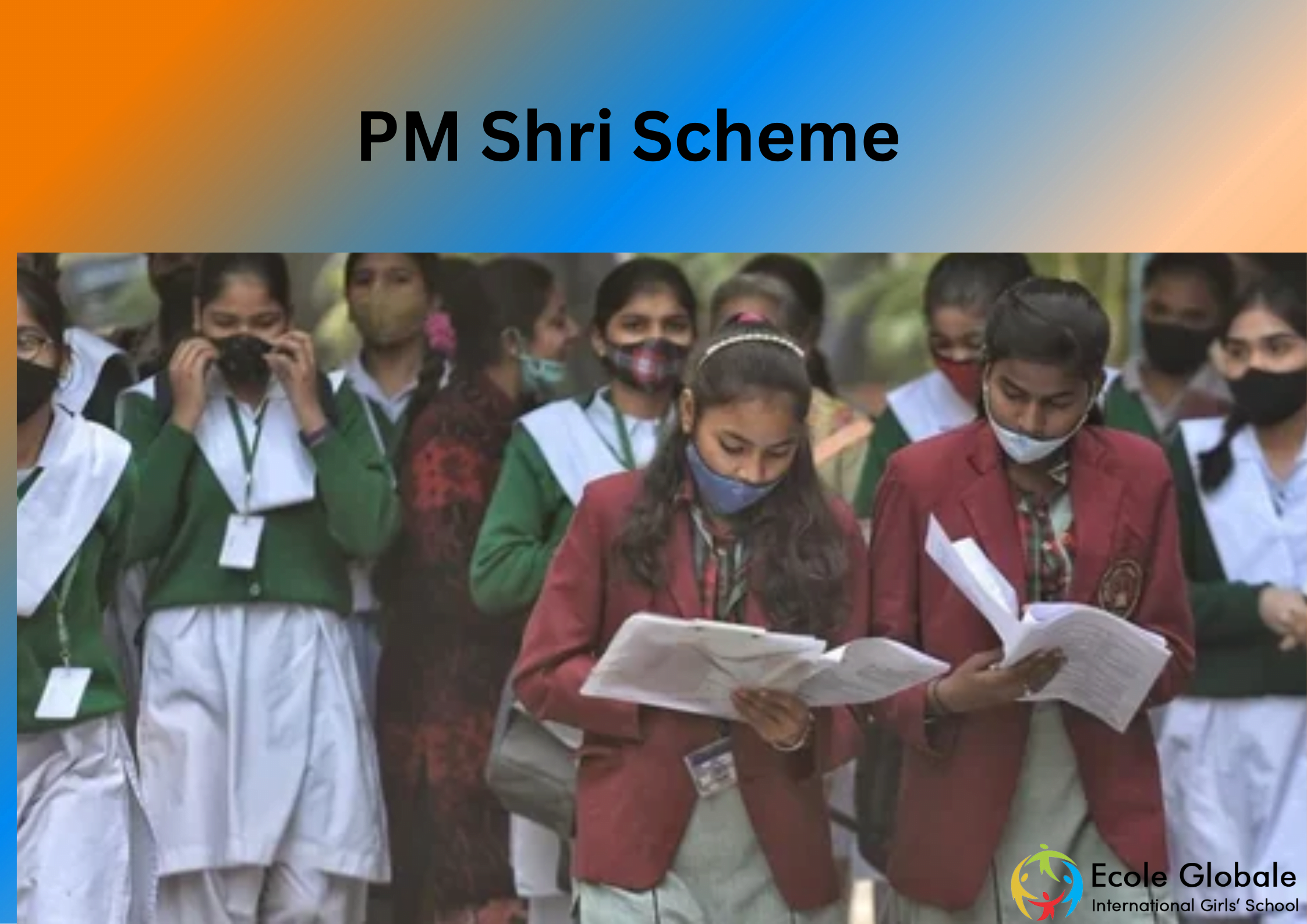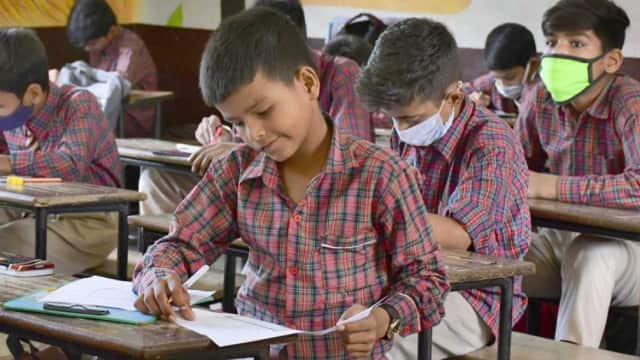The importance of getting educated in India has increased over the past few years. It is necessary not only to have a good education but also a degree that can help you get a good job as well. In India, there are various government schemes which make it affordable for people to get an education
The Central Government had taken a significant step to bolster the foundation of the nation’s future youth following the adoption of the National Education Policy 2020. It will be renovated nationwide through the PM Shri (Prime Minister’s Schools for Rising India) programme.
That was stated by PM Modi in honour of Teacher’s Day.
As per research conducted by Boarding School in India, The new Centrally Sponsored Scheme “PM Shree School” has received approval from the Union Cabinet. Other nearby schools will receive direction and leadership from PM Shree Schools. In actuality, the project for the PM Shree (PM School for Rising India) initiative will be carried out for five years from 2022–2026 for Rs. 27360 crores.
Also Read : Which Girls Schools In India Providing Scholarships?
Education In India
India is a country that has been struggling with the issue of education for many years. The government has tried many different approaches to improving the education system but still is far from perfect.
The importance of education cannot be overstated, especially in India. It is what will help ensure that India’s children grow up to become productive members of society and contribute to their communities.
Without proper schooling, many young people would not have the skills needed to succeed in life.
India has made some progress when it comes to educating its citizens, but there is still much work left to do.
The country needs more resources devoted towards educational institutions for them to provide a quality education that will prepare students for life after graduation.
India has a long history of providing quality education. There are many benefits of education in India, including the following:
– It helps to build up the country’s economy.
– It provides opportunities for people who cannot afford an education otherwise.
– It helps to develop new technology and ideas.
– It helps to create more jobs for citizens of the country.
Benefits Of Getting an Education

When you get educated, you’re not just getting a piece of paper. You’re getting the keys to the world. Education opens doors and minds, and it allows us to experience more than we ever could have imagined on our own.
When you get an education, you’re not just learning about what’s happened in the past—you’re preparing yourself for the future! By learning how things work now, you’ll be able to make better decisions when it comes time for your own life and career.
And did we mention that education can help you make more money? Sure, there are plenty of other benefits too (like being able to do things like reading books or watching movies), but if your goal is to be financially independent, then education is one of the best ways to achieve that.
Education is one of the key ingredients to a successful life. It provides students with the knowledge, skills and attitudes necessary to become productive members of society. Moreover, education is an investment in the future, helping people build careers and better lives for themselves and their families.
Education has many benefits, including:
Better job opportunities. You’re more likely to get a well-paying job with a college degree than without one.
Better health. People who are more educated are less likely to smoke or abuse drugs than those who don’t have degrees or credentials. That means they have better physical health and lower chances of developing chronic conditions like heart disease or diabetes. Education also helps people make better decisions about their health — such as eating right and exercising regularly — which can lead to healthier lifestyles overall.
Longer life expectancy. People with higher levels of education tend to live longer than those who don’t have degrees or credentials.
Stronger communities. Better-educated people tend to be more engaged in their communities, whether it’s volunteering at local nonprofits or attending public events like concerts or sporting events.
A sense of fulfilment and purpose in life comes from pursuing knowledge through higher education.
What is the PM Shri Scheme?

In a fair, welcoming, and happy learning environment that accommodates children’s varied backgrounds, linguistic needs, and learning styles while also involving them in their education, PM Shree will offer high-quality instruction.
Schools supervised by PM Shree will take the lead by mentoring other schools in their respective regions.
The methodology used in these schools will be more inquiry-driven, discovery-oriented, discussion-based, flexible, and entertaining. It will also be more experiential, holistic, and integrative.
The learning objectives of each student will be the main emphasis of each lesson. Assessments at all levels will be competency-based and based on conceptual comprehension as well as knowledge application in practical settings.
To make PM Shree schools more environmentally friendly, they will instal solar panels, LED lights, nutrition gardens with natural farming, waste management systems, plastic-free campuses, and water harvesting. A study of environmental protection customs and practices, such as environmentally friendly practices, will be covered.
Gaps will be filled in a systematic and planned manner after the effectiveness of the resources for each domain in terms of availability, sufficiency, suitability, and utilisation will be evaluated.
It will be investigated how to collaborate with sector skill councils and local businesses to improve employability and present better employment prospects.
This results in the developing of the School Quality Assessment Framework (SQAF). To ensure standards, these schools will also undergo regular quality assessments. The portal will be opened four times a year, once every quarter, for the first two years of the scheme.
How Will The Selection Be Made?
PM Shree schools will be chosen via Challenge Mode, where schools fight for recognition as model schools. Schools will need to apply using the online application platform.
To make PM Shree schools more environmentally friendly, they will instal solar panels, LED lights, nutrition gardens with natural farming, waste management systems, plastic-free campuses, and water harvesting. A study of environmental protection customs and practices, such as environmentally friendly practices, will be covered.
The methodology used in these schools will be more inquiry-driven, discovery-oriented, discussion-based, flexible, and entertaining. It will also be more experiential, holistic, and integrative.
The learning objectives of each student will be the main emphasis of each lesson. Assessments at all levels will be competency-based and based on conceptual comprehension as well as knowledge application in practical settings.
What Are The Benefits Of The PM Shri Scheme
Every youngster receives career and psychological counselling.
Students will have a strong connection to Indian culture and knowledge, be proud of Bharat’s civilisational ethos and values, understand India’s role in the world, be aware of their responsibilities to society, other living things, and the environment, be communicatively proficient in Indian languages, respect inclusivity, equality, and unity in diversity, have a sense of service, and support the idea of “Ek Bharat Shreshth Bharat.”
Character development, civic virtues, and essential obligations and responsibilities for nation-building
These schools will be transformed into thriving institutions with an emphasis on children’s whole development.
How to apply for the Shri scheme?

Phase 1: Classes 1-571–8 in primary school and 1–10/1–12–6–10–6–12 in secondary/senior secondary schools Local Self-UDISE+/Central/State/Union Territory Governments.
The schools with the code will be taken into account for the scheme’s selection. The selection will take place via a three-stage process with the following time limit:
Phase 2: In this phase, schools eligible to be designated as PM Shree schools will be identified based on the minimum standard generated by UDISE+ data. Phase 1: States/UTS sign MoU pledging to implement the New Education Policy holistically.
Phase 3: To meet specific requirements, this phase is based on a challenging method. Only the aforementioned qualifying colleges that meet the challenge’s requirements may compete. The States, KVS, and JNVs will certify the fulfilment of the requirements through physical inspection. Check the information provided by the States/UTS/KVS/JNV schools, and then offer the Ministry a list of the schools.
Conclusion
The Pradhan Mantri Shri scheme aims to promote pension and life insurance in India.
With the PM Shri Pathsala Scheme, no school in India will be left before or after school is out. It’s a wonderful initiative that is necessary to ensure that all children, no matter their circumstances, get a quality education.
And as we’ve shown you with this article, it will benefit both children and communities alike, so we’ll be keeping a close eye on its implementation in the coming months and years.
For any queries related to parenting, schooling, or any student-related tips, click here to check out our latest blogs








